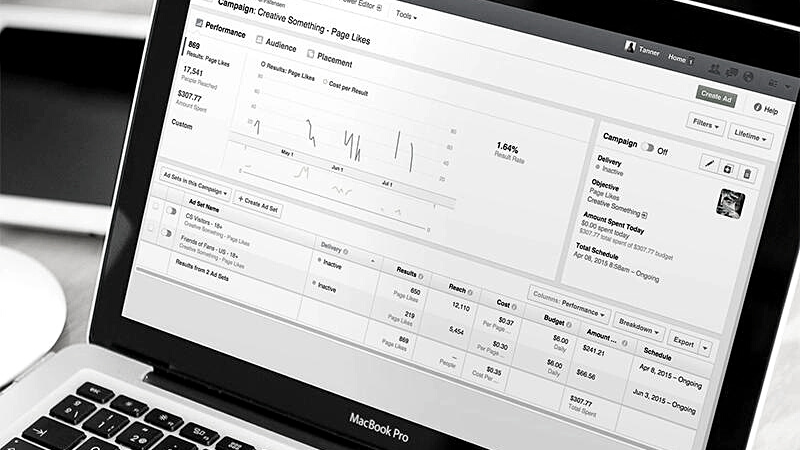Facebook Ads Manager is a powerful tool that allows businesses and marketers to create, manage, and analyze their advertising campaigns across Facebook and Instagram. With its robust features and analytics capabilities, Ads Manager provides the control you need to optimize your ad performance and achieve your marketing goals. Here are some effective strategies for leveraging Facebook Ads Manager for better ad control.

Table of Contents
Toggle1. Understand the Ads Manager Interface
Before diving into your campaigns, take the time to familiarize yourself with the Ads Manager interface:
- Navigation: Explore the various tabs, including Campaigns, Ad Sets, and Ads, to understand where to manage different aspects of your advertising.
- Metrics Overview: Familiarize yourself with the key performance metrics available, such as impressions, reach, engagement, and conversion rates.
2. Define Your Objectives
Setting clear objectives is essential for successful advertising. Facebook Ads Manager allows you to choose from various objectives based on your goals:
- Awareness: Focus on brand awareness or reach to introduce your product to new audiences.
- Consideration: Select objectives like traffic, engagement, or lead generation to encourage users to interact with your brand.
- Conversion: Choose conversion objectives to drive sales or specific actions on your website or app.
By aligning your campaign objectives with your overall marketing strategy, you can create more focused ads.
3. Target Your Audience Precisely
One of the most significant advantages of Facebook Ads Manager is its detailed targeting options:
- Custom Audiences: Upload your customer list or create audiences based on website visitors or app users to retarget them effectively.
- Lookalike Audiences: Use lookalike audiences to reach new users who resemble your existing customers, expanding your reach to potential buyers.
- Detailed Targeting: Utilize demographic, interest, and behavior filters to narrow down your audience and reach the most relevant users.
4. Create Multiple Ad Sets
To gain insights into what works best, consider creating multiple ad sets within a campaign:
- A/B Testing: Use different ad creatives, headlines, or targeting parameters across ad sets to test performance. Analyze which combinations yield the best results and optimize accordingly.
- Budget Allocation: Set distinct budgets for each ad set to manage spending based on performance. You can increase budgets for high-performing ad sets and decrease those underperforming.
5. Utilize Dynamic Ads
Dynamic ads allow you to showcase relevant products to users based on their previous interactions with your website or app:
- Product Catalog: Upload your product catalog to automatically create personalized ads for users, displaying items they have shown interest in.
- Retargeting: Use dynamic ads to retarget users who have visited specific product pages or added items to their carts but didn’t complete the purchase.
This approach can lead to higher conversion rates and improved ad efficiency.
6. Optimize Ad Placement
Facebook Ads Manager gives you control over where your ads appear:
- Automatic Placements: Let Facebook optimize placements across various platforms (Facebook, Instagram, Audience Network, and Messenger) for the best results.
- Manual Placements: Alternatively, choose specific placements that align with your campaign goals. For instance, you might prioritize Instagram Stories for visually compelling content.
Testing different placements can help you identify the most effective channels for your audience.
7. Monitor Ad Performance
Regularly monitoring your ad performance is crucial for optimizing campaigns:
- Analytics Overview: Use the Ads Manager dashboard to track key metrics and analyze the performance of your campaigns, ad sets, and individual ads.
- Adjust Based on Insights: If certain ads are underperforming, consider adjusting targeting, creative elements, or budgets to improve results.
8. Use the Facebook Pixel
Implementing the Facebook Pixel on your website is essential for tracking user interactions and conversions:
- Conversion Tracking: Monitor specific actions users take on your site, such as purchases or sign-ups, allowing you to assess the effectiveness of your ads.
- Retargeting: Create retargeting campaigns for users who have interacted with your website, increasing the likelihood of conversions.
9. Leverage Automated Rules
To save time and maintain control over your campaigns, utilize automated rules within Ads Manager:
- Set Performance Triggers: Create rules that automatically pause, activate, or adjust budgets based on specific performance metrics. For example, you can set a rule to pause underperforming ads that fall below a certain click-through rate (CTR).
- Daily or Lifetime Budget Adjustments: Set up rules to adjust your ad budgets based on performance throughout the day or campaign duration.
10. Regularly Review and Refine Your Strategy
Facebook Ads Manager is an evolving platform, and continuous improvement is key to success:
- Stay Updated: Keep an eye on changes to Facebook’s advertising policies and features, as they can impact your strategy.
- Refine Targeting and Creatives: Regularly revisit your audience targeting and ad creatives to ensure they remain relevant to your objectives and audience preferences.
Conclusion
Facebook Ads Manager offers extensive tools and features that enable you to gain better control over your advertising efforts. By understanding the interface, defining clear objectives, utilizing precise targeting, and continuously monitoring performance, you can optimize your campaigns for maximum impact. Leveraging these strategies will not only enhance your ad control but also improve your overall advertising ROI. Start experimenting with these tips today to elevate your Facebook advertising game!


No responses yet